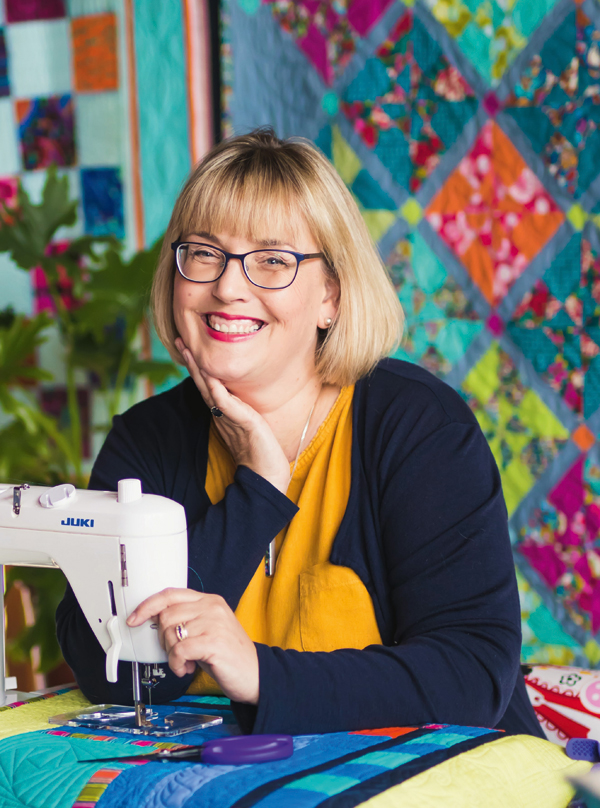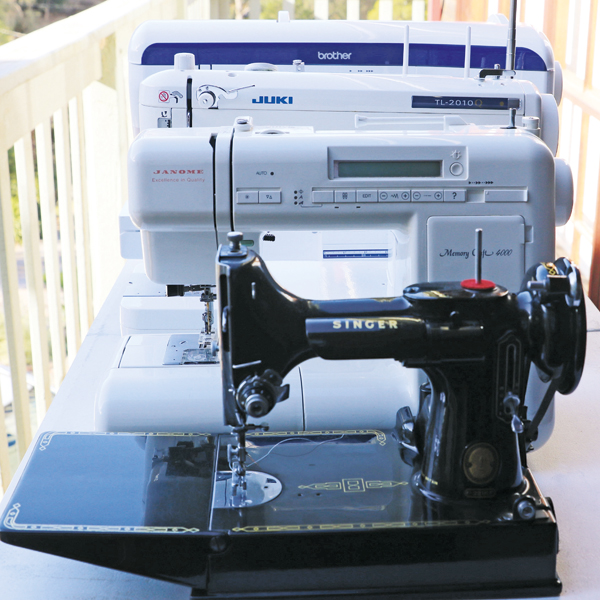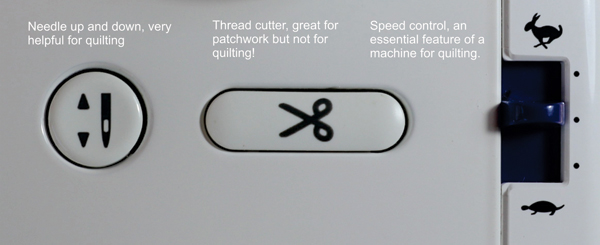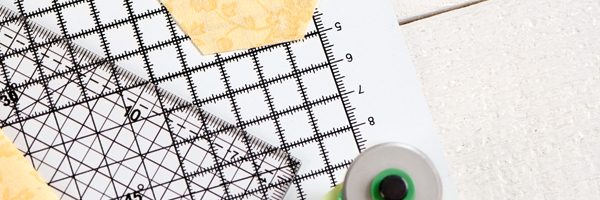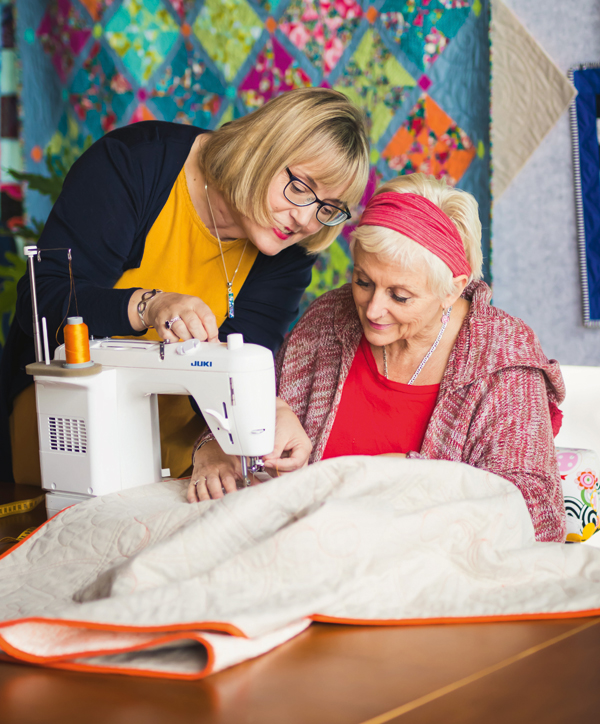
Domestic Machine Quilting with Anita Ellis
Anita Ellis
Anita is an accomplished quilting educator who inspires and mentors students around Australia in the art of quilting, on domestic sewing machines, long arm machines, and everything between. When not travelling with her education business, Hillside Quilting, home base is Anita’s studio, set among the gum trees of Warrandyte on the rural edge of Melbourne, Victoria.
Anita is a long-standing contributor at the Australian Machine Quilting Festival (held biennially in Adelaide), where she continues to develop and deliver workshops and classes to many professional long arm and domestic machine quilters. She is now a full-time quilting educator and Westalee Design-accredited tutor working across the industry with major manufacturers, quilting shops, guilds, professional long arm quilters and individuals, delivering bespoke training packages.
Anita will be presenting a regular column in each issue of Quilters Companion to provide guidance on how to start quilting on your domestic machine, and how to build your skills with free-motion quilting, quilting with rulers and design techniques.
She will share her own tried and tested methods to provide you with the first building blocks needed, by using simple foundation exercises that allow skills to develop, and progress your skills with her more complex projects with confidence.
To find out more about Anita and her workshops, visit www.hillsidequilting.com.au
How to choose a sewing machine for home quilting
What is the first thing you think of when you are setting up to machine quilt your patchwork tops at home? Answer: the sewing machine. We will therefore start this series of articles with just that.
I always say there are at least three ways to quilt your patchwork tops: by machine, by hand and by cheque book. All are valid and you may use any of them at different times, although hand quilting for me is waiting for my retirement.
I was a long arm quilter for 10 years before I changed my main focus to quilting education and I have quilted hundreds, if not thousands, of quilts for other people over the years. The large quilts you create may still get sent to one of the many fantastic long arm quilters out there, but wouldn’t it be nice to complete some of your own projects yourself at home.
So without further ado, what do we look for when choosing a sewing machine for quilting? The short answer to this may be “the one I have already”! That’s great — you can quilt on most domestic sewing machines. But if you are in the lucky position of purchasing a new one, what should you look for?
I am not about to tell you to buy this brand or that specific model. This is purely about what features to look for in a machine. Then you can take your check list and try them all out and find the one that suits you and your budget best. A great time to do this is when a big quilt show comes to your town and many of the machine manufacturers are represented. Often you get good deals and extras thrown in. Your local dealer is also well worth a visit as they are likely to be the ones servicing your machine in the future. We all love having local shops, but we need to support them to keep them vibrant and relevant.
I will address the features that I look for in order of importance; these are the things I have learnt from teaching quilting for many years that really make a difference to your quilting experience.
Speed control
If there was ever a feature of a sewing machine that I wouldn’t do without, it is this. That little slider on the front of the machine is the first thing to look for. If you cannot control the stitching speed from the machine, keep walking! Being able to stitch at a consistent speed is vital to quilting success. Quilting is not a race; keeping a steady consistent speed is the goal. Remember the game where you pat your head with one hand and do circles on your belly with the other? Having a machine with speed control takes out one of those things so you only have to focus on one thing — what your hands are doing. This then leads to much better control of the stitching.
Needle up needle down
Ok, so we have speed control covered, what next? The ability to leave the needle in the down position when you are working will give you neat stitching lines. We have all done it — that wonky stitch when you start stitching if the needle is up. Most modern machines have this feature, but do check as it will really improve the quality of your stitching. Needle up, needle down? Check. Moving on.
Good visibility of the work area
I have put this ahead of a large throat space for a reason. You can have the biggest throat space on a machine, but if parts of the machine are blocking your field of vision, then your stitching will not be as accurate as it could be. You are also likely to get frustrated with that machine very quickly as you duck your head around to see what you are doing. This is a feature that some machine manufacturers do not consider. They think, “Great, big throat space, done.”
When you are trialling a machine, sit down at it and think about that field of vision. “Can I see enough of the quilt behind the needle or is the machine head blocking my view?” Everybody will have a different view point because of differing body dynamics, so just because a friend has a particular machine and loves it, don’t assume it will be ideal for you too.
Throat space
Now that you have got the visibility covered, go for the biggest throat space you can afford. I will say, though, if it came down to choosing between visibility and throat space, for me visibility would win every time.
The quilts we are making are getting bigger all the time, so look at that throat space, as well as the height from the machine bed to the arch of the machine. One thing to consider is that a bigger throat usually means a bigger and heavier machine. Is portability important to you?
Large, flat extension table
A spacious flat extension table is next on the list. You may get your dealer to throw one in for you when you purchase your machine. I have a couple of sizes, one slightly smaller to take to classes where space can be limited, and a larger one for home. A flat surface allows the quilt to flow freely whether you are freemotion quilting or quilting with rulers. I will be talking about setting up the ideal work space in future articles and will address this further then.
Good lighting
Lighting on sewing machines can be a bit hit and miss. It is important to have good lighting, but it comes down the list a little for me because you can always supplement machine lighting with bendy lights or LED strips that stick to your machine. Look for lights that are bright and eliminate shadows from your work.
So there you have it, my list of things to look for when you are on that lucky hunt for a new sewing machine for quilting at home:
- Speed control
- Needle up and down
- Good visibility of your work area
- Large throat space
- Spacious extension table
- Good lighting
Life is a compromise — you don’t always get everything in one machine and you have to focus on what is important to you. My favourite machine at the moment ticks all the boxes, bar one, the lighting. For me it was worth fixing that with additional task lights.
Things that are not so important are hundreds of fancy stitches, thread cutter (nice for patchwork but for quilting it is better to leave long ends and thread them into the quilt sandwich) and going beyond your budget. There are machines out there at all price points that satisfy my list of must-haves, so you shouldn’t feel persuaded to go out of your price range.
Happy hunting. Next time we will look at setting up an ideal quilting work space, and no, it doesn’t rely on having a huge dedicated sewing studio to do it!

